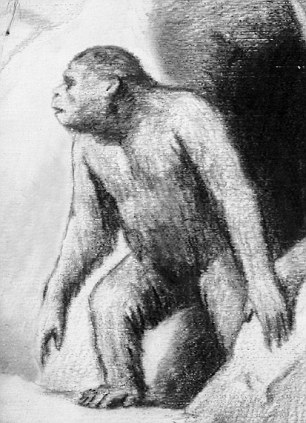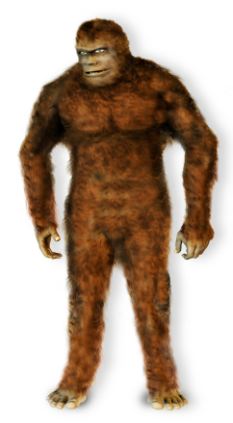
October 10, 2011

Over the last two days, the international media has picked up on releases from those conducting the Snowmen conference in Siberia. Reports began to circulate that “Yeti hunters claim to have discovered ‘indisputable proof’ of the fabled beast after grey hair was found in a remote Russian cave.”
Elsewhere, for example, it was noted that “The local administration of the Kemerovo region confirmed on its website that ‘indisputable proof’ has been found that confirms the Yeti, also known as Abominable Snowman, exists. What’s prompted this? Well, they found footprints, his alleged bed and possible hair samples.”
In far away Australia, the news was headlined “A Yeti in Siberia? ‘We’re 95 per cent sure,’ say scientists.”
The official Russian press release said: “During the expedition to the Azasskaya cave, conference participants gathered indisputable proof that the Shoria mountains are inhabited by the ‘Snow Man.'”
To see the phrase “indisputable proof” spread like wildfire has been unfortunate, for there is no zoological or anthropological proof of anything. It appears the conference organizers or the cryptotourism officials of Kemerovo or both were so interested in putting a good spin on the results of their “expedition” that they have overblown the results.
These exaggerated Siberian Snowmen claims are not good for cryptozoology. There is no reason to overdo what has been found merely to make an entertaining news story.

Calmer heads appear to be at work for the Daily Mail of London. That newspaper wrote:
The extraordinarily bold claims came despite no convincing photographic evidence or any proven discoveries such as bones, remains or DNA samples from a four day mission to Kuzbass in Russia.
Instead, researchers were led to a cave which contained a single unclear footprint and a small sample of grey-coloured ‘hair’ found on a clump of moss which has yet to be analysed.
Huffington Post interviewed today and the reporter and I discussed the context in which to consider, regarding short treks being called “expeditions”:
“This does not seem to be any more than what you hear about from weekend excursions in North America that go out, discovering some hair of undetermined origin, calling it ‘Bigfoot hair,’ then locating some broken branches and piled trees, saying it was made by Bigfoot, and finding footprints that look like Sasquatch tracks,” said Loren Coleman, director of the International Cryptozoology Museum in Portland, Maine.
“These are not ‘proof’ that would hold up, zoologically,” Coleman told The Huffington Post.
I also was interviewed by Radio Free Europe, as well:
U.S.-based Loren Coleman, who was invited to participate in the event…[but was not able to attend] says DNA evidence from hair and fecal samples suggests that some unknown beast is indeed out there.He says he has been fascinated by cryptozoology, or the study of hidden and unknown animals, for some 50 years, authoring multiple books on the yeti and establishing a museum on the field in the U.S. state of Maine.And while he concedes that a quick trek into the taiga likely won’t find the yeti, he thinks the search is far from pointless.“I have always been one of the proponents that I think we will eventually find some of these hominids, not by quick excursions in the field looking at old evidence, [but] by long-term funding of probably some good female researchers, putting themselves in the field for as long as 6 months,” Coleman said.“Bigfoot, the yeti, the snowman — all of these different kinds of hominids and anthropoids that are unknown — are merely waiting to sort of be found if people have patience.”Females should carry out the search, he explains, because much like apes, the undiscovered primates could be intimidated by male pheromones.Someone like a Jane Goodall for yetis, he says, is what’s needed.
But to return to the main point here, while “evidence” might have been collected, there was not “indisputable proof” gained.
No DNA analysis has been conducted. No results have been confirmed or published.
One footprint, allegedly.
One clump of moss said to be a bed, supposedly.
Sorry, such a rush to make a sensational media splash is not even good hominology among my Russian colleagues.
Let us slow this all down. Perhaps it was not produced by the mainstream elements at the conference. I note Dmitri Bayanov of the Darwin Museum was not able to travel to Siberia, and the source of the news may be a tourism department interested in getting visitors to the area.
About Loren Coleman
Loren Coleman is one of the world’s leading cryptozoologists, some say “the” leading living cryptozoologist. Certainly, he is acknowledged as the current living American researcher and writer who has most popularized cryptozoology in the late 20th and early 21st centuries.
Starting his fieldwork and investigations in 1960, after traveling and trekking extensively in pursuit of cryptozoological mysteries, Coleman began writing to share his experiences in 1969. An honorary member of Ivan T. Sanderson’s Society for the Investigation of the Unexplained in the 1970s, Coleman has been bestowed with similar honorary memberships of the North Idaho College Cryptozoology Club in 1983, and in subsequent years, that of the British Columbia Scientific Cryptozoology Club, CryptoSafari International, and other international organizations. He was also a Life Member and Benefactor of the International Society of Cryptozoology (now-defunct).
Loren Coleman’s daily blog, as a member of the Cryptomundo Team, served as an ongoing avenue of communication for the ever-growing body of cryptozoo news from 2005 through 2013. He returned as an infrequent contributor beginning Halloween week of 2015.
Coleman is the founder in 2003, and current director of the International Cryptozoology Museum in Portland, Maine.
Filed under Abominable Snowman, Almas, Breaking News, Cryptotourism, CryptoZoo News, Yeti